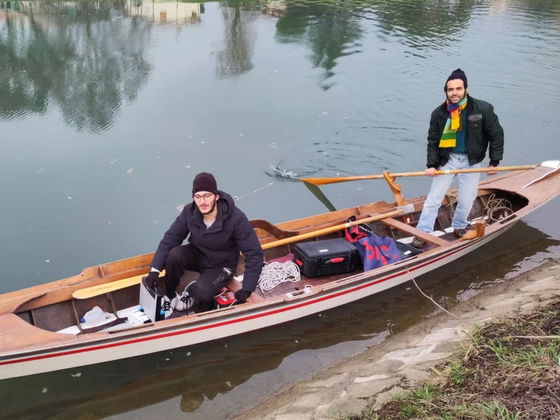Low-cost acoustic modem built on Raspberry Pi brings new era to underwater communications

On land, wireless communication using radio signals and optical signals is useful, but most wireless communication underwater generally uses acoustic signals. Although acoustic signals are slower to transmit than radio signals and optical signals, they can transmit farther underwater. However, specialized hardware and software for underwater acoustic communication are expensive, and a modem alone can cost more than $10,000 (about 1.4 million yen). A technology that has the potential to revolutionize underwater communication has been developed in Italy.
Cheap Underwater Acoustic Communication Is Now Possible - IEEE Spectrum

Filippo Campagnaro and Michele Zorzi, researchers at the University of Padua in Italy, have launched a startup called SubSeaPulse SRL to develop low-cost alternatives to the modems (transmitters and receivers) and transducers (antennas), which are key and expensive components in underwater communications. The acoustic modem they are developing is unique in that it is a very inexpensive modem, about one-tenth the cost of those available on the market.
SubSeaPulse SRL's acoustic modem, called 'SuM,' is built on a Raspberry Pi. It is a low-power acoustic modem that can modulate signals and also acts as an analog front end for testing acoustic signals.

SubSeaPulse SRL is also developing a cheaper alternative to conventional transducers, which cost more than $2,000 each. SubSeaPulse SRL plans to modify a $400 device used to listen to marine mammals and use it as a transducer by converting energy into acoustic signals and acoustic signals into energy.
As mentioned above, underwater acoustic communication has a problem of high cost, so it is currently used only in some fields such as defense. However, if SubSeaPulse SRL's inexpensive underwater acoustic communication module becomes widespread, it will become easier to use underwater sensors in coastal areas to study climate change, monitor marine pollution, and track biodiversity.
Because SuM is software-defined, users can modulate the signal to suit their specific application. It can also be used as an analog front end rather than a complete modem, so it can test acoustic signals. So users can install and use their own software, and this flexibility is also a great thing about SuM, Campagnaro claims.
Campagnaro and Zorzi testing an underwater acoustic communications module made by SubSeaPulse SRL in the river.

Milica Stojanovic, a professor of electrical engineering at Northeastern University who develops algorithms for underwater wireless communications, said the SuM could be useful for researchers who don't have access to expensive equipment or who want a software-defined unit that can transmit any type of waveform they want.
However, Stojanovic also noted that 'the modem is just one component in a complete underwater communications system. ' Range and bit rate are also important factors for users in underwater communications, and these are mainly determined by the transducer and the inherent bandwidth limitations of underwater communications, so 'the problems of propagation and signal distortion in the underwater acoustic channel are not trivial.'
However, he said, 'The more people who work on the development of the SubSeaPulse SRL underwater acoustic communication module, the better it will be.'
Related Posts:
in Hardware, Posted by logu_ii







